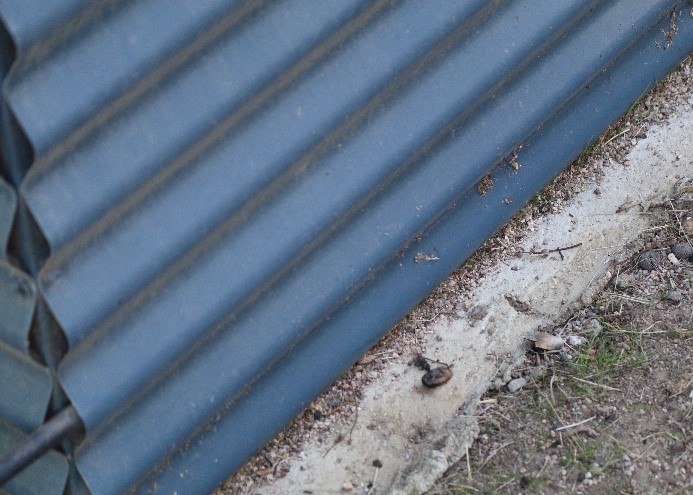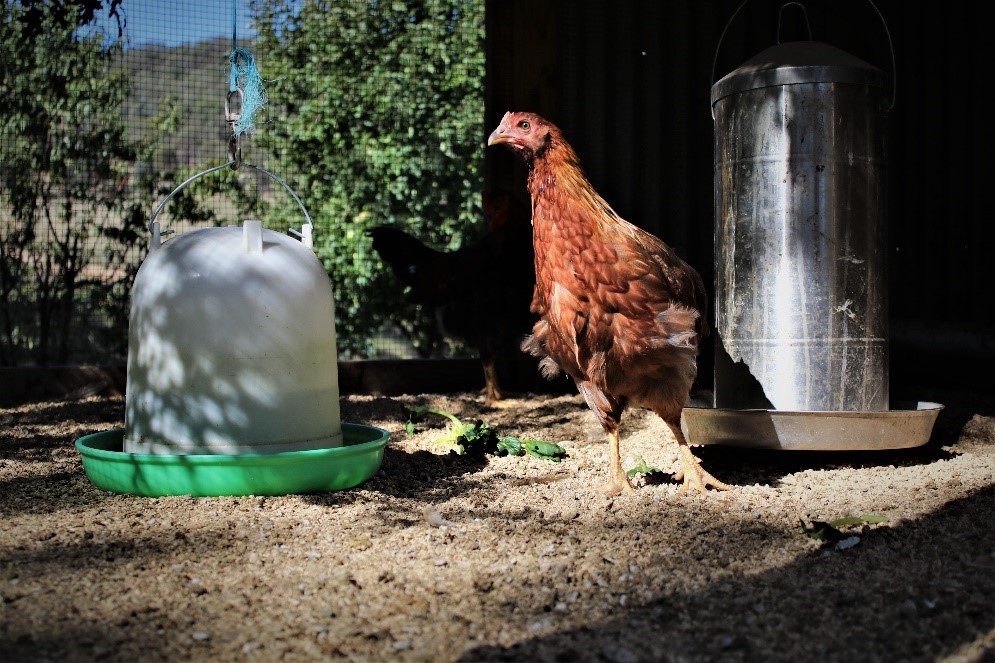Creating the Hen Pen
So you’ve decided to become a chicken parent… congratulations! If you want to prevent parasites, predators and disease in your backyard beauties, take a look at how best to design your poultry pen!

Positioning pens under trees provides fantastic protection from weather extremes
Location
All chicken breeds have been bred from a few wild fowl, one of which is the Red Jungle Fowl (Gallus gallus). As its name suggests, this chicken loved hanging out within the rich jungle undergrowth during the day, coming out into unprotected clearings for brief foraging periods. What can this tell us about our cage setup? That chickens instinctively want canopy cover as they feel more protected! So when selecting where to place your pens (let’s be real you’ll end up with multiple), look for nearby trees or ensure you have a portion of the pen roof covered so your birds feel safe. Trees nearby will also act as protection during summer and winter, so think about morning and afternoon sun direction so you can reduce heat during summer by planning for morning sun and afternoon shade.
Size
Many councils have minimum space requirements per chicken, or a blanket maximum chicken number so make sure you check those out prior to building. It’s also important to keep in mind that the more chickens you have in a cage, the more stress they are placed under, which then makes them more likely to succumb to diseases.
The height of your cage is also important, as the cubic space per chicken influences the amount of heat in the environment. Taller cages help to displace heat created by the chickens which is essential for survival during summer and are also easier to get into (great for egg collection and cleaning).
Materials
Construction of the pen depends on your budget, there are a multitude of pre-made pens available or you can build your own. There’s pros and cons for each material, and it really depends on personal choice and what you’re comfortable working with. Although wood creates more hiding spots for mites, this problem can be easily fixed by sealing the gaps and painting the pen, which adds a personal touch to your pen and can be a great family activity!

The size of the wire mesh used on your cage is another important consideration. The usual chicken wire is enough to keep your chickens in, but unfortunately it allows rodents and wild (usually feral) birds access to your pen. These pests can be destructive, eating your chicken’s tails, feed and stealing bedding. They can also spread disease and parasites which is another key reason for choosing wire with smaller holes. I also find this wire to be sturdier and thus less likely to give way if a desperate fox tries to break into your pen. This material is more expensive, but you’ll have a solid pen that weathers well and protects your chickens.

Concrete edging to prevent predators from digging in.

Fine mesh to stop bird and rodent access with mesh sunk into the ground to stop foxes.
As for the top of the pen, I believe nothing beats a solid roof. I find I have to do less maintenance on my pens as the floor doesn’t get rained on which is fantastic during winter. If you’re worried about the heat, you can insulate steel roofs to reduce heat in summer, and by placing your pen close to trees this will also reduce the build-up of heat.


Lining your tin roof will reduce heat in Summer.
Flooring
So you’ve constructed your pen and it’s time to choose a substrate for the floor. There are so many options available which can make it very confusing, and often it’s through trial and error as to what will work in your region.
I personally have a mix of concrete areas, dirt, sand, rice hulls and horse stable bedding materials. I purchase a pelletised stable bedding that expands with water. I place this on the surface of my pens and this greatly reduces the smell in winter, and helps absorb water from my birds droppings. It is then easy to remove and replace, and makes fantastic compost for your garden! The same can be said for rice hulls, but I found you needed a deep coverage to obtain good results.

Enrichment
To provide a good level of welfare for your chickens try to add these features to your pen:


Swinging perches build strength, stop mice damage and reduce mites. Paint wooden nest boxes and perches to reduce mite numbers and make your pen look fresh and colourful!

Painting perches makes them easier to clean, reduces mites and adds a touch of brightness to your pen!
Food and Water
It is imperative that you supply your chickens with good quality feed and water. If you are keeping chickens for their eggs, the nutritional content of your egg will only be as good as the feed you give your hens! So if you want them to be healthy and lay you beautiful nutritious eggs, choose a quality feed product. The range of Barastoc feeds can be found here. The storage and age of the feed you give also has a role in its nutritional composition, so make sure you store feed appropriately away from moisture and rodents.
When choosing a feeder or drinker for your pen, think about the suitability of it and whether your chickens can easily access feed/water. Automated water lines are also handy if you have multiple pens.


Choose feeders/drinkers that suit your setup. Suspend from the roof to reduce contamination and rodents.
Finishing touches
There are many extras you can add to your pen, such as misting/sprinkler systems for summer, extra perches/rocks, DIY treat dispensers, the list goes on! Unleash your creative side and send us some snaps of your completed hen pen!
Once you’re ready to get some hens, check out my article Proactive Points to Purchasing Poultry.
-Breanna Carr, 5th Year Veterinary Science Student

